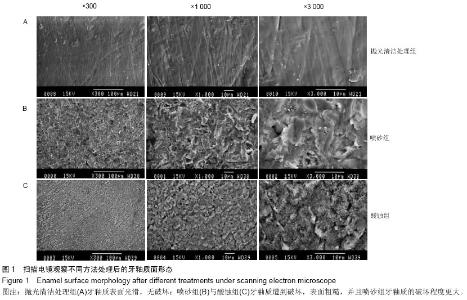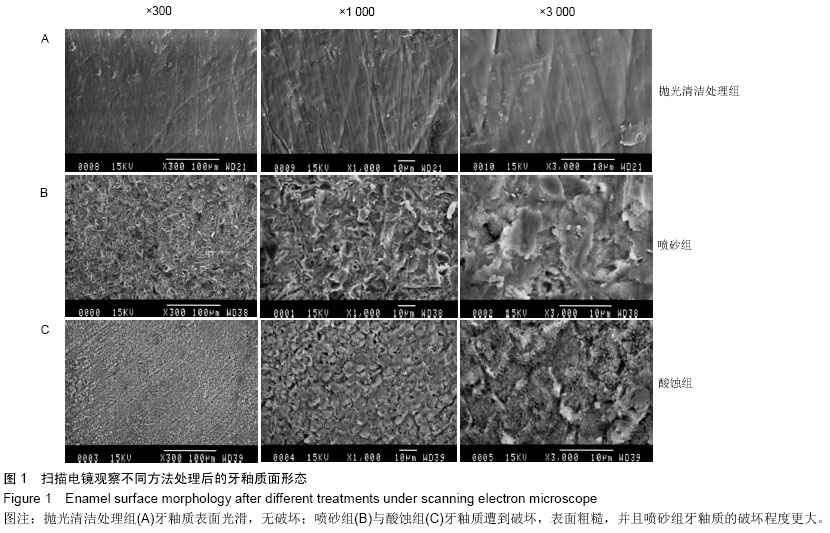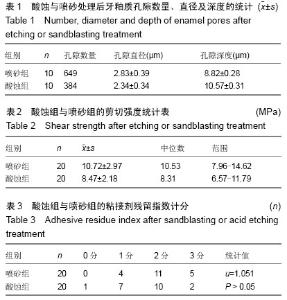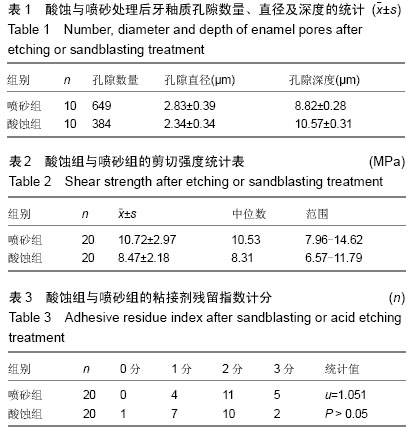| [1] 谢晓华.环境湿度对正畸托槽粘接强度的影响的研究[D].福州:福建医科大学,2006.
[2] 董敏.正畸固定矫治中影响牙面颜色因素的体外研究[D].福州:福建医科大学,2012.
[3] Alawjali SS,Lui JL.Effect of one-step polishing system on the color stability of nanocomposites.J Dent.2013;41 Suppl 3: e53-61.
[4] 焦海涛.不同底板脱落金属托槽经喷砂处理在粘接的体外实验研究[D].青岛:青岛大学, 2004.
[5] 叶芳,廖小平,杨健,等.4种喷砂砂粒对牙釉质表面粗糙度影响的对比研究[J].口腔医学, 2009,29(7):340-341.
[6] Gardner A,Hobson R.Variations in acid-etch patterns with different acids and etch times.Am J Orthod Dentofacial Orthop, 2001,120(6):65-67.
[7] 赵婧.牙面处理方法对托槽二次粘接强度的影响[D].山东:山东大学,2011.
[8] Atsü S,Çatalba? B,Gelgör ?E.Effects of silica coating and silane surface conditioning on the bond strength of rebonded metal and ceramic brackets.J Appl Oral Sci. 2011;19(3): 233-239.
[9] Ahrari F,Basafa M,Fekrazad R,et al.The efficacy of Er,Cr:YSGG laser in recond-itioning of metallic orthodontic bracket.Photomed Laser Surg.2012;30(1):41.
[10] 石东晓,陈杰,刘珺.喷砂技术对牙釉质和正畸托槽间黏结强度的影响[J].广东牙病防止, 2007,15(4):155.
[11] Canay S,Kocadereli I,Ak"ca E.The effect of enamel air abrasion on the retention of bonded metallic orthodontic brackets.Am J Orthod Dentofacial Orthop. 2000;117(1):15-19.
[12] Hesse M,Magin TM,Weber K.Genes for intermediate filament proteins and the draft sequence of the human genome:novel keratin genes and a surprising high number of pseudogenes related to keratin genes 8 and 18.J Cell Sci.2001;114(14): 2569-2575.
[13] Espinar-Escalona E,Barrera-Mora JM,Llamas-Carreras JM,et al.Improvement in adhesion of the bracket to the tooth by sandblasting treatment.Mater sci Mater Med.2012;23: 605-611.
[14] Al Jabbari YS,Zinelis S,Eliades G.Effect of sandblasting conditions on alumina retention in representative dental alloys.Dent Mater J.2012;31(2):249-255.
[15] Robles-Ruíz JJ,Ciamponi AL,Medeiros IS,et al.Effect of lingual enamel sandblasting with aluminum oxide of different particle sizes in combination with phosphoric acid etching on indirect bonding of lingual brackets.Angle Orthod.2014;84(6): 1068-1073.
[16] 张旭.正畸托槽脱落后两种底板处理方法对比分析[J].中国医药指南,2012,10(10):170.
[17] Sen D,Poyrazoglu E,Tuncelli B,et al.Shear bond strength of resin luting cement to glass-infiltrated porous aluminum oxide cores.J Prosthet Dent. 2000;83(2):210-215.
[18] Coulombe PA,Omary MB.Hard and soft principles defining the structure,function and regulation of keratin intemediate filaments.Curr Opin Cell Biol.2002;14(1):110-122.
[19] Cal-Neto JP,Castro S,Moura PM,et al.Influence of enamel sandblasting prior to etching on shear bond strength of indirectly bonded lingual appliances.Angle Orthod.2011;81(1): 149.
[20] 叶芳,廖小平,胡友德.喷砂洁治对牙釉质影响的实验研究[J].实用中西医结合临床,2011,11(3):52.
[21] Türköz C,Ulusoy C.Evaluation of different enamel conditioning techniques for orthodontic bonding.Korean J Orthod.2012;42(1):32-38. |



